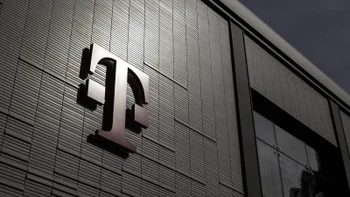Scientists harvest sound to create electricity, cell phone blabbers vindicated

The institute of nanotechnology at Sungkyunkwan University in Seoul, South Korea seems tо be working on an intriguing technology for energy harvesting that uses the power of sound waves.
Now we know that Nokia used to work in its UK lab facilities on capturing ambient wireless energy that is all around us in the cities, the so-called RF harvesting, and trying to convert it into electricity to supplement a cell phone's battery, but sound is a whole different ballgame. Seriously, just imagine the amount of juice you'd get at the Yankee Stadium during playoffs.
"A number of approaches for scavenging energy from environments have been intensively explored. The sound that always exists in our everyday life and environments has been overlooked as a source. This motivated us to realise power generation by turning sound energy from speech, music or noise into electrical power.
Sound power can be used for various novel applications including cellular phones that can be charged during conversations and sound-insulating walls near highways that generate electricity from the sound of passing vehicles. The latter development would have the additional benefit of reducing noise levels near highways by absorbing the sound energy of vehicles.", says the project's lead Dr Sang-Woo Kim.
The idea is actually pretty simple, at least on paper. When the sound waves hit an absorbing pad, they make the pad vibrate, and this is translated to tiny zinc oxide wires that are placed between two electrodes. The back and forth movement creates electricity, which in turn can be used for charging. For now the only current a prototype was able to generate is 50 millivolts from sound with 100 decibels strength, or about the noise from heavy street traffic.
While this is not nearly enough for independent cell phone charging, the team working on the project thinks they can tweak the material of the zinc oxide wires even further, to allow for producing more energy from lower ambient noise. Just imagine what an argument could the phrase "Keep it quiet, honey, your battery will explode..." make.
We certainly cross finger for them - who knows, when you combine RF harvesting with transparent solar cell films in our touchscreens and on our phones' backs, then add the sound harvesting pad, we might just be able to get more than a day of intense usage out of our big screen smartphones in the bright future.
source: TheTelegraph
Now we know that Nokia used to work in its UK lab facilities on capturing ambient wireless energy that is all around us in the cities, the so-called RF harvesting, and trying to convert it into electricity to supplement a cell phone's battery, but sound is a whole different ballgame. Seriously, just imagine the amount of juice you'd get at the Yankee Stadium during playoffs.
The idea is actually pretty simple, at least on paper. When the sound waves hit an absorbing pad, they make the pad vibrate, and this is translated to tiny zinc oxide wires that are placed between two electrodes. The back and forth movement creates electricity, which in turn can be used for charging. For now the only current a prototype was able to generate is 50 millivolts from sound with 100 decibels strength, or about the noise from heavy street traffic.
We certainly cross finger for them - who knows, when you combine RF harvesting with transparent solar cell films in our touchscreens and on our phones' backs, then add the sound harvesting pad, we might just be able to get more than a day of intense usage out of our big screen smartphones in the bright future.
source: TheTelegraph
Follow us on Google News










![A new Android bug is making it impossible to install new apps. Are you affected? [UPDATE]](https://m-cdn.phonearena.com/images/article/176703-wide-two_350/A-new-Android-bug-is-making-it-impossible-to-install-new-apps.-Are-you-affected-UPDATE.webp)

Things that are NOT allowed:
To help keep our community safe and free from spam, we apply temporary limits to newly created accounts: